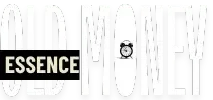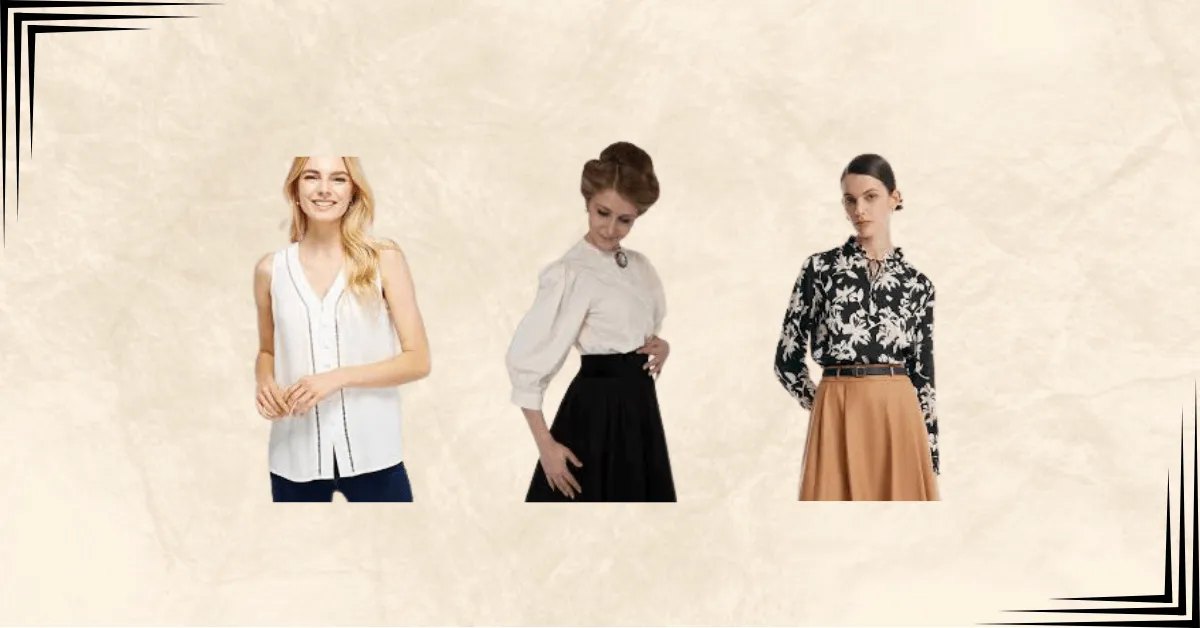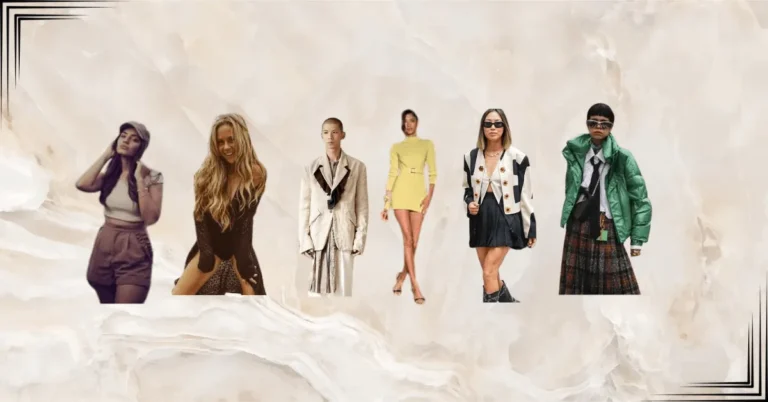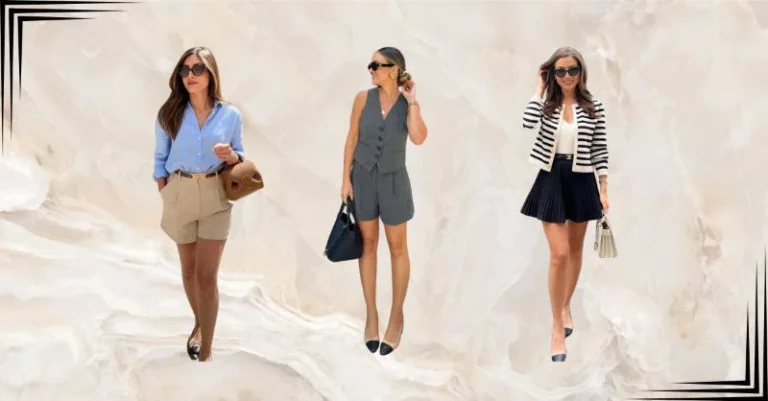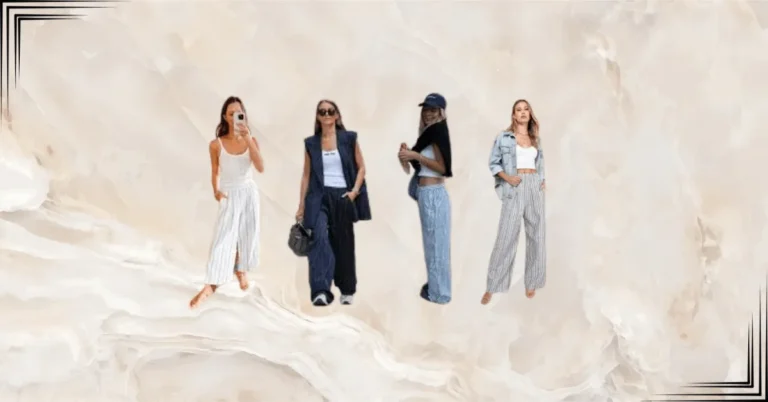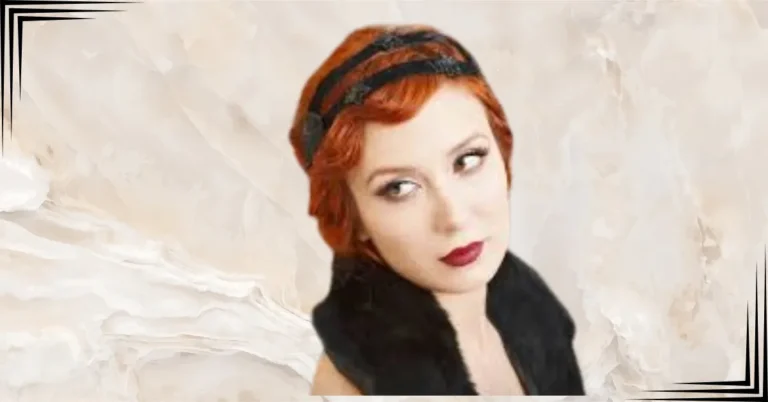What Did a Blouse Look Like? A Visual History of Styles & Designs
What did a blouse look like? Whenever this question comes to our mind, the answer is this: we like certain things in our clothes, but we do not know their actual definition. In this article, we will explain the types of blouses with pictures and types of blouses with names and tell you what it is and their unique features. It also has a special significance in Old Money style. Whether a mob wife or a business casual woman, both frameless women like to wear it. Just like pearl necklace outfits make you look different from others, similarly, if you wear a good blouse, your personality will appear different.
Types of Blouses for Ladies
Ladies’ blouse designs include “bow blouses,” “wrap-front blouses,” and “peek-a-boo blouses.” Cultural designs inspire some blouses. Working women have more simple and tailored blouses, which can be worn with suits or trousers.
Functionality & Style
In the 19th century, blouses replaced corsets, giving ladies freedom of movement. But today, it has become a versatile piece. You can style it with casual jeans or with formal skirts. Nowadays, eco-friendly fabrics are also being used.
Styling Tips
You use blouses to elevate your wardrobe. If you want to wear them to the office, use solid-colored blouses and minimal jewelry. For parties, you can choose embroidered blouses.
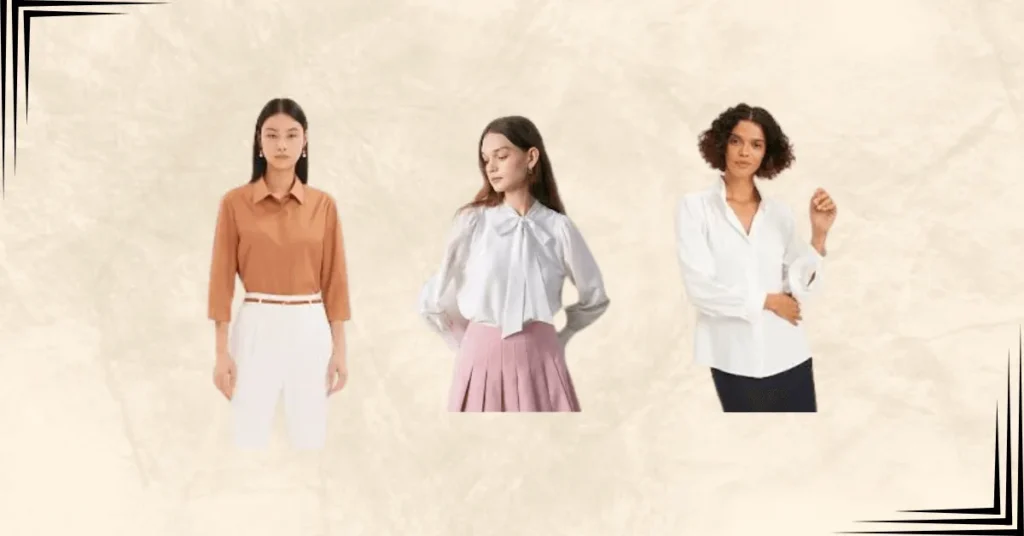
Historical Evolution of the Blouse
- Pre-19th Century Origins
The concept of the blouse came from old-time draped clothes, like the Roman stola and Indian kurta. The main focus of these clothes is on modesty. Cotton and linen were used in them. During the Renaissance, European women wore loose undergarments that functioned like blouses.
- Victorian Era: Corsets to Comfort
During the Victorian era of 1837-1901, blouses took the form of outerwear. During that time, females abandoned tight corsets and adopted shirtwaist blouses. These clothes were similar to menswear and were also popular among working-class women.
- 1920s-1950s: Femininity and Function
It was the 1920s when loose, drop-waist blouses introduced the flapper fashion. After WWII, Christian Dior launched a new look in 1947, including fitted blouses, floral prints, and feminine designs.
- Post-1960s: Modern Reinventions
Bold prints and androgynous styles became popular during the 1960s-70’s. Today’s blouses have sustainable fabrics, oversized cuts, and tech-inspired designs.

Key Design Elements of a Classic Blouse
These key design elements identify classic blouses:
- Fabrics: To achieve comfort and elegance, use lightweight fabrics like linen, silk, or chiffon.
- Necklines: Apne face shape ko Peter pan, V-neck ya boat neck se design kare.
- Sleeves: Puffed, bell, and cap sleeves add drama or simplicity to your personality.
- Closures: Use buttons, zippers, or ties to combine functionality and style.
Fit & Length:
The blouse can be slightly fitted or loose. You have options ranging from cropped to a little length.
Detailing:
You can make a beautiful blouse for ladies with embroidery, loss or pleats.
Colors & Patterns:
Colors like white and beige are perfect for ladies’ blouses. Floral, stripes, or polka dots are trendy in “types of blouses with pictures.”
Collar Styles:
According to “Types of Blouses with Names,” you can style a pointed collar, a Mandarin collar for formal functions, or a sweetheart neckline.
Layering:
You can wear the blouse with a blazer or cardigan as a “women’s blouse for work”.
Cultural Variations in Blouse Styles
- European Dirndl Blouses
Dirndl blouses are part of the outfits in Europe. You can find these in white or pastel colors. They also have puffed sleeves, lace trim, and decorative buttons on the front. You can wear an apron and a full skirt with a Dirndl blouse.
- South Asian Choli and Kurti
In South Asia, a choli is a fitted blouse you can wear with a saree. It has heavy embroidery, mirror work, and bright colors. Apart from this, a kurta is a long blouse you can wear with a salwar or trousers. It is made of cotton or silk with simple or printed designs.
- Latin American Peasant Blouses
In Latin America peasant blouses are called “huipil” or “blusa campesina”. These blouses are loose-fitting and made of cotton or linen. They also feature hand-stitched geometric patterns and floral embroidery. These are considered part of the Bohemian style.
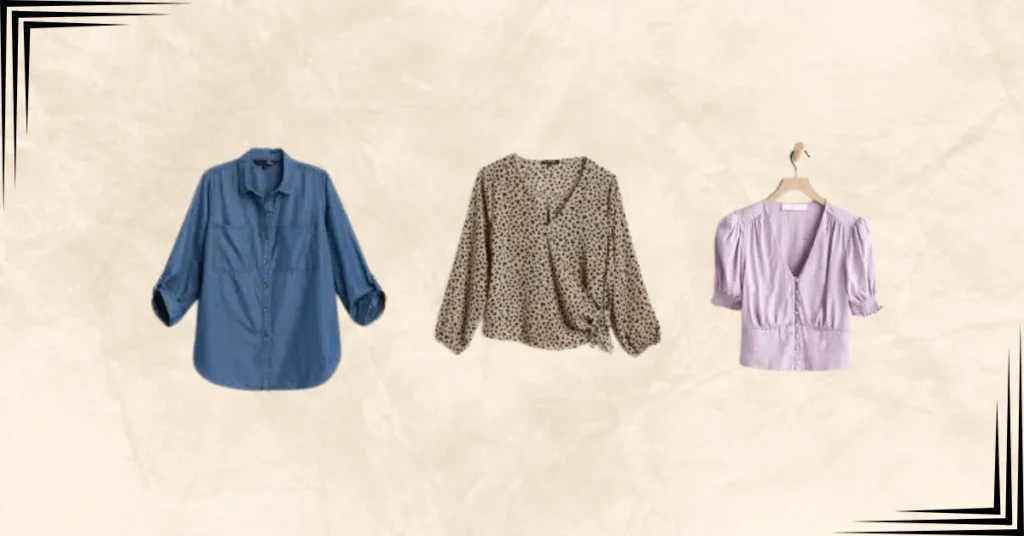
Blouse vs. Shirt: Key Visual Differences
- Silhouette: Flowy vs. Structured
It is often seen that the cut of the blouse is flowy and loose, which makes movement easier. The shirt is slightly more structured, with a stiff collar and straight hem.
For example, a “women’s blouses for work” for the office could be a flowy silk blouse, while the shirt may be fitted with cotton.
- Embellishments: Embroidery, Bows, and Lace
Blouses often feature decorative elements such as embroidery, bows, lace, or sequins. Shirts are generally plain or with simple stripes.
Iconic Blouse Styles Through the Decades
- 1920s Flapper-inspired Blouses
The 1920s were the flapper era when blouses came in loose, drop-waist designs. Deco patterns and fringe details accompanied these. Their stuff was made of silky fabrics and beadwork, which made it easier for women to dance and move.
- 1970s Boho Peasant Tops
The peasant blouse was popularized by hippie culture in the 1970s. These were made of flowy cotton/linen. They often had embroidered flowers and crochet details. Celebrities such as Jane Birkin and Stevie Nicks styled them.
- 1980s Power Blouses
Working women of the 1980s adopted power blouses. These blouses had broad shoulders, padded sleeves, and bold colors. These structures were made of silk and pleater. They were worn with suits.
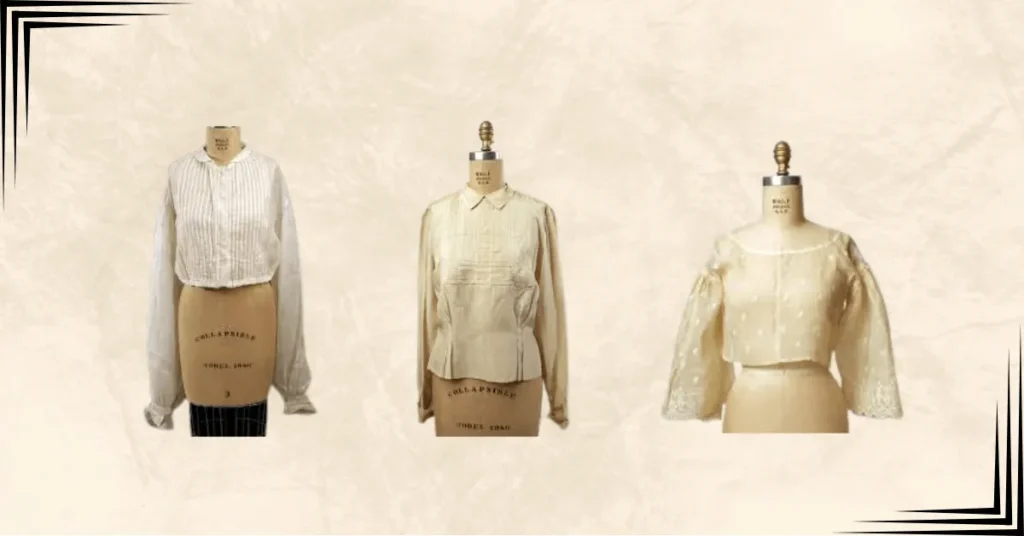
The Role of Blouses in Fashion Movements
- Pre-WW1 Practicality
Blouses from the 1900s onwards were simple and functional. They were made of cotton and linen. Factory workers loved them. Suffragettes made them a symbol of women’s rights.
- Post-WW2 Femininity
In 1947, blouses with fitted waists were promoted a lot. They were brought back by femininity after vertiginous stability.
- Eco-Friendly Modern Designs
Today’s brands use sustainable fabrics and zero-waste patterns. Designers like Stella McCartney are now creating “vegan silk” blouses.
Blouses in Traditional Attire
- Scottish Aboyne Dress Blouses
As we know, in Scottish Highland dancing, the blouse, which is part of the Aboyne dress, is made of white fabric. It has a high neck, long sleeves, and delicate embroidery.
It can be worn with a Tartan skirt. Thus, you can easily represent your traditional identity.
- Austrian/German Trachten Styles
Trachten outfits from Austria /Germany feature dirndl blouses in pastel colors. These are made with puffed sleeves, lace, and decorative front buttons. These blouses are paired with a fitted bodice and a full skirt.
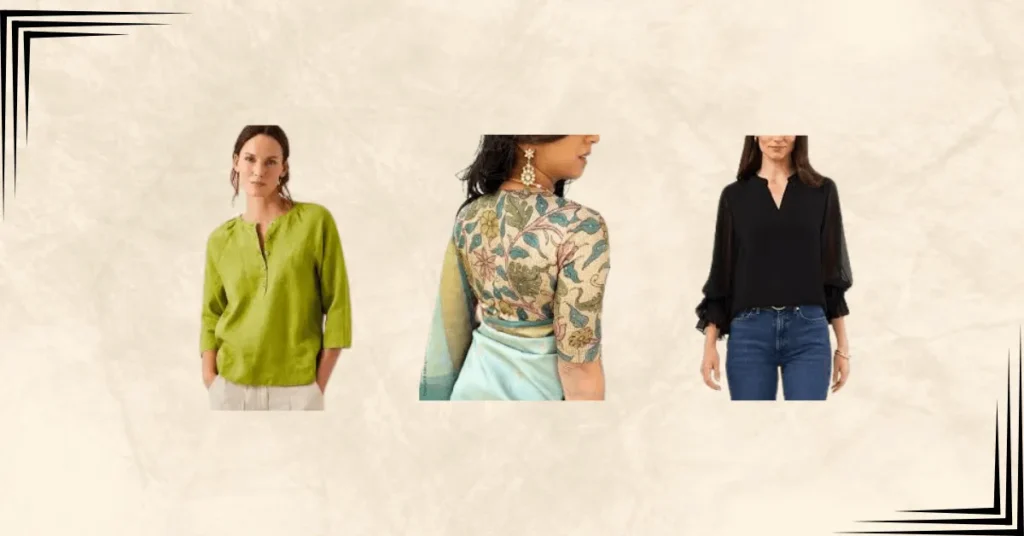
Modern Interpretations: From Blouson Jackets to Crop Tops
Crop tops ek versatile fashion staple ke tor pe jane jate hain. Inko aap har season ke trends mein shamil kar sakte hian.
Types:
- Graphic Prints: They have bold designs with catchy slogans.
- Off-shoulder: You can look feminine and colorful with this type of blouse.
- Mock neck: After wearing this, a high neck and sleek look is achieved.
Free brands like Zara and Urban Outfitters offer affordable and trendy options, like this ribbed tank from Zara for $9.In today’s modern era, one should have dressy options, such as high-waisted jeans and casual mini skirts.
You can wear crochet and strapless designs in summer. Besides, sporty crop tops are considered ideal for an active lifestyle. In winter, you can achieve extra coverage with a mock neck.
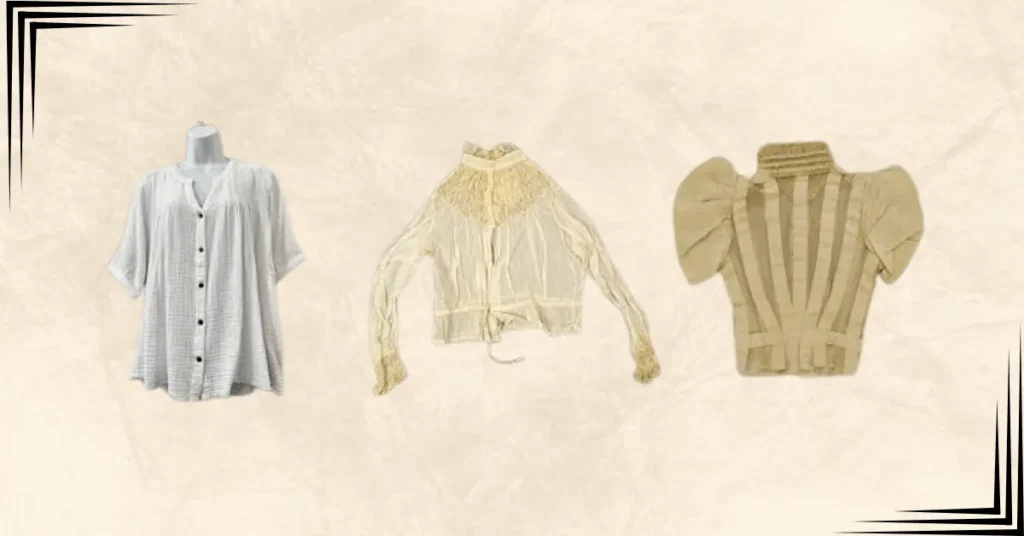
How to Identify a Blouse: A Visual Checklist
- Fabric & Flow: First, check the fabric of the clothes; the fabric should be soft so as not to prick the skin.
- Neckline: Check the neckline to see if the style is good, whether it is a V-neck shirt, a boat neck shirt, or a Peter Pan collar shirt, because everyone has their own choice.
- Sleeves: Check the sleeves; most people like puffed, and some like sheer sleeves.
- Embellishments:Blouses with embroidery, boss, and lace trim look better than plain shirts. So try to choose a good design for yourself.
- Closures: Buttons and ties add style to your blouse, so choose a blouse whose buttons enhance its beauty.
- Fit: While buying a blouse, check its fit and consider how it will look on you; some people like full fit, some like semi-fit, and some like to wear loose.
- Occasion: Remember the occasion for which you want to buy the blouse and then decide accordingly.
Conclusion
“What did a blouse look like?” This question is answered through Victorian ruffles, peasant embroidery, and modern crop tops. The design of the blouse is changing every era. From dirndl lace trim to Indian kurti, the designs keep changing. Even today, you can mix comfort with flowy fabric and elegant necklines.
